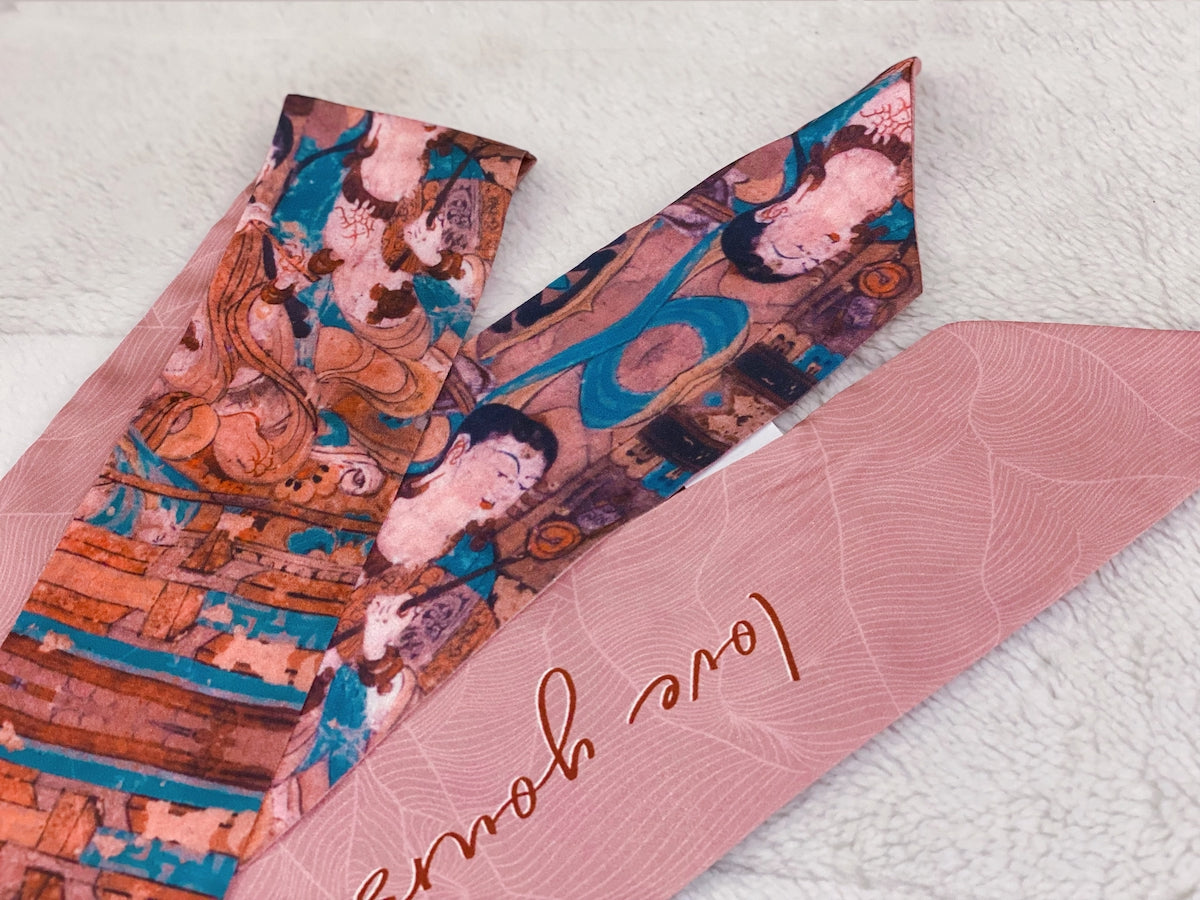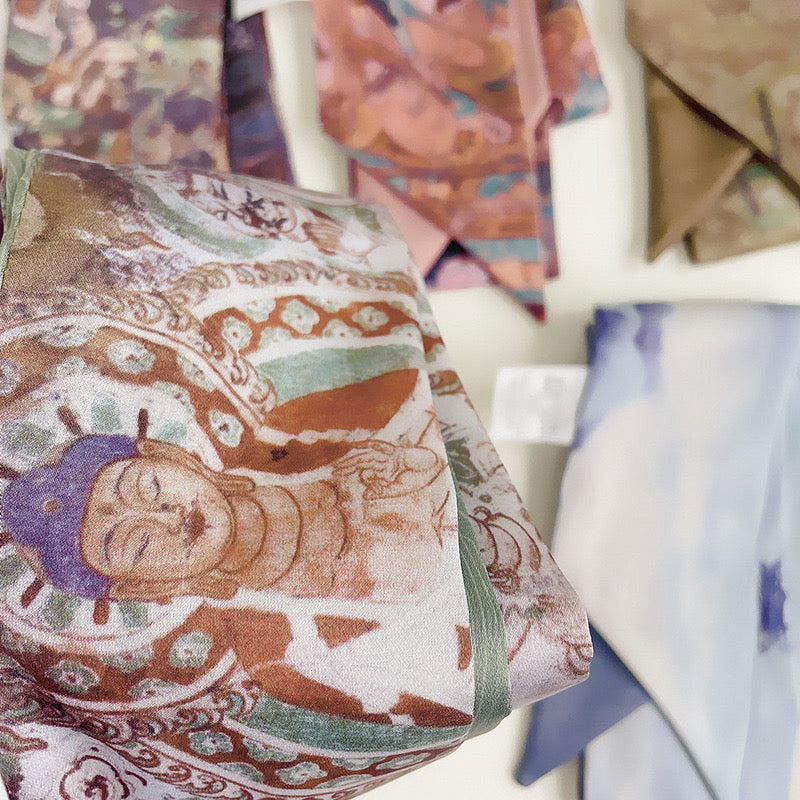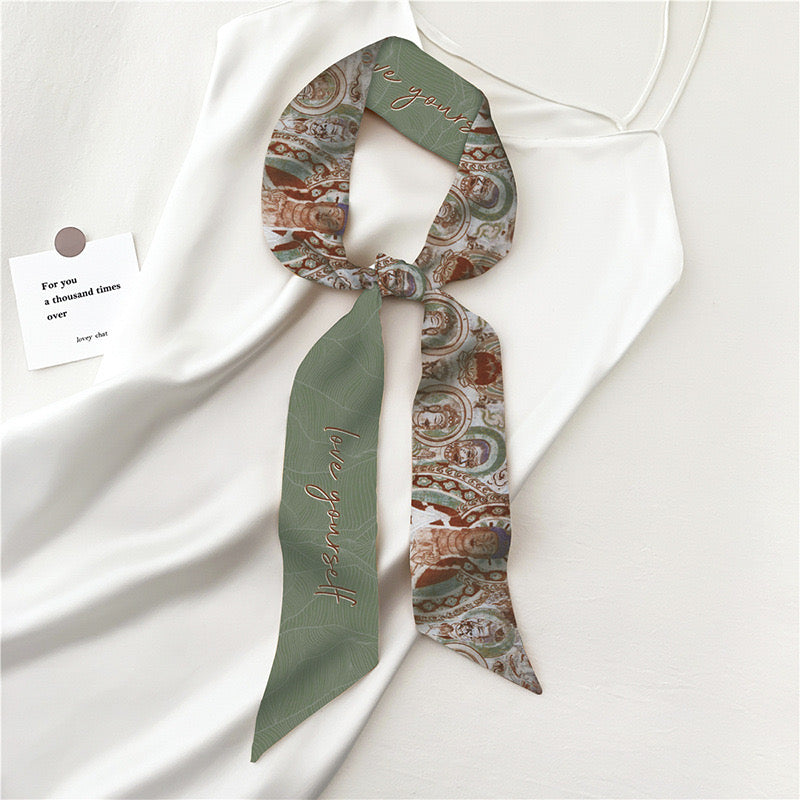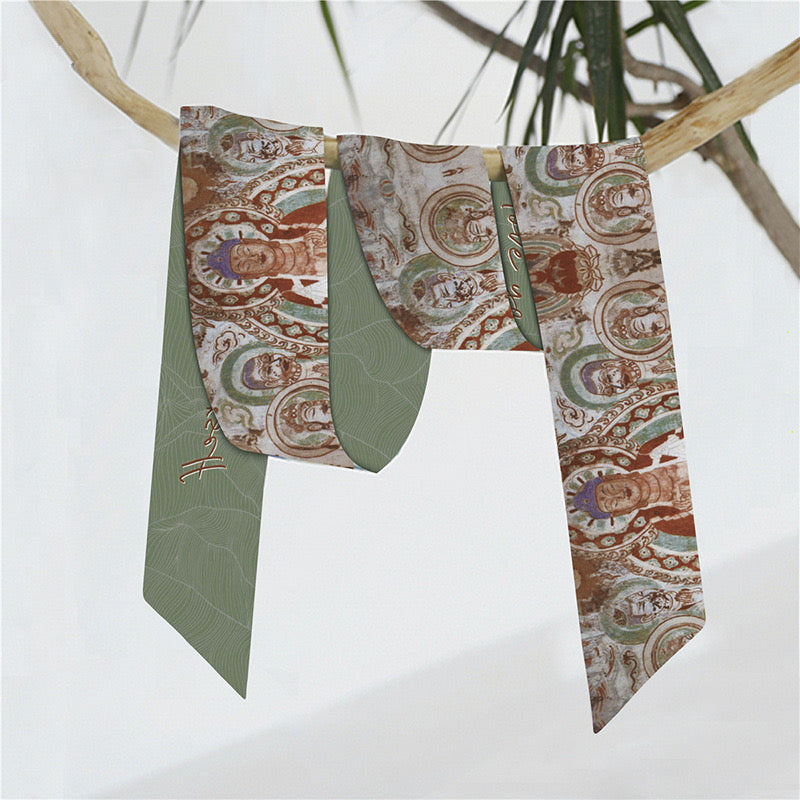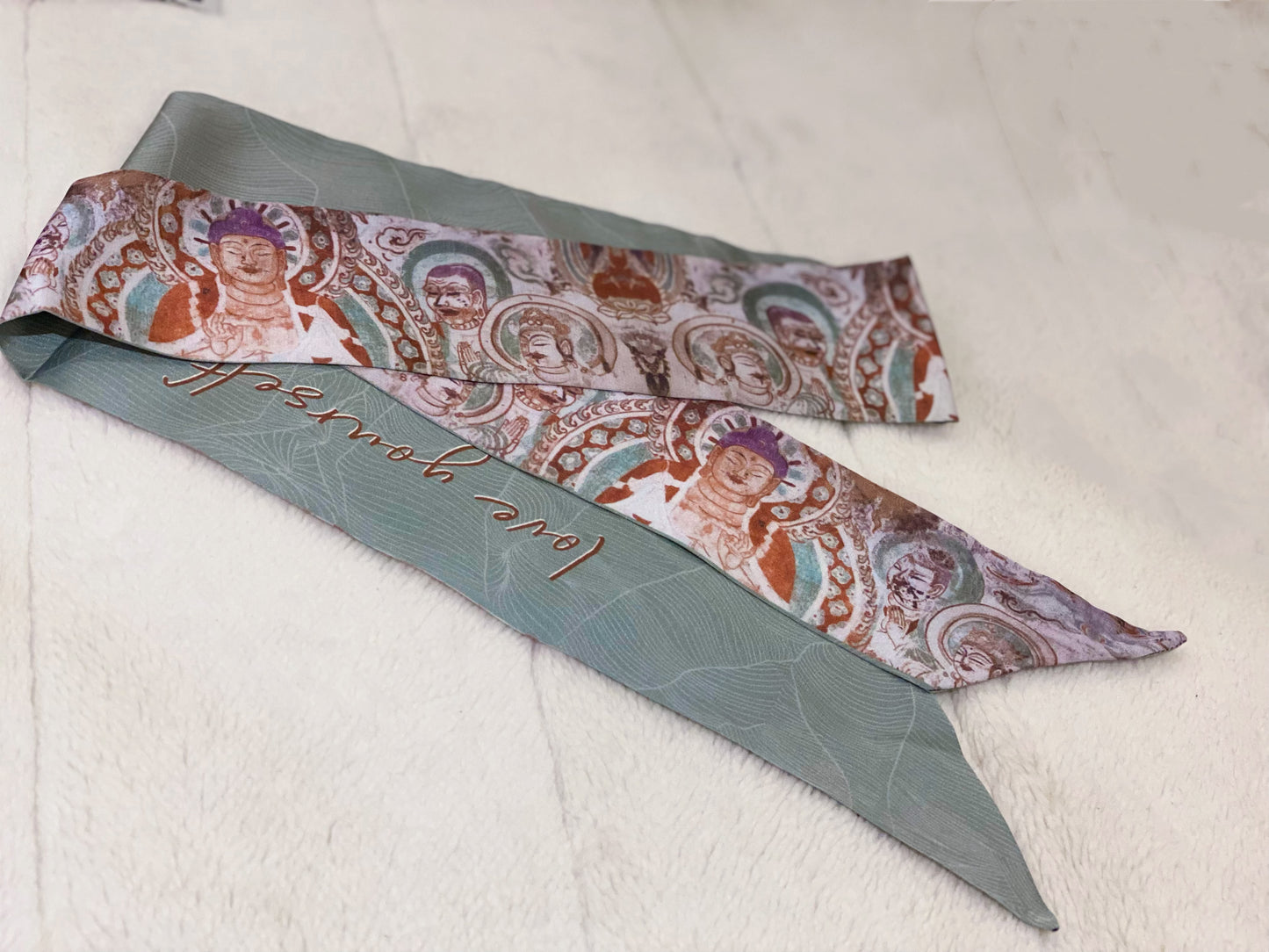When exploring the evolution and influence of Chinese art on contemporary aesthetics and culture, one cannot overlook the significance of Dunhuang.
Where is it?
Situated in the Gansu province of northwestern China, Dunhuang (敦煌) is a city that holds immense historical and cultural value. It resides at the western end of the Hexi Corridor, where the provinces of Gansu, Qinghai, and Xinjiang intersect.
Positioned at the crossroads of the ancient Silk Road, an essential trade route connecting China with the Mediterranean world, Dunhuang became a bustling hub for the exchange of goods and the convergence of diverse cultures. Among these cultures, Buddhism played a prominent role, arriving in Dunhuang and flourishing there.
During the era of the Northern and Southern Dynasties (420 to 589 AD), when central China was plagued by continuous warfare and unrest, Buddhist communities sought refuge near the Hexi Corridor, transforming Dunhuang into a prosperous center for the development of Buddhism.
A well-known tale recounts how Buddhism took root and permeated the lives of the locals. The protagonist, a monk named Le Zun, settled in Dunhuang. One day, while admiring the mountainous scenery, he witnessed a radiant golden light emanating from a nearby peak, as though the Buddha himself resided there. Inspired, he requested the construction of caves on the opposing mountain, where he could engage in meditation and study Buddhism. Later on, numerous Buddhists followed and began constructing caves and grottoes in Dunhuang.
However, these spaces were not built only for practising meditation; they also housed Buddha statues, Buddhist scriptures, and intricate murals. As more caves were carved, people fervently used them to express their faith. Buddhists aspired to spend their afterlife meditating in the Pure Land, while ordinary individuals prayed for favorable weather, national stability, and personal prosperity. Wealthy patrons utilised the caves as a means to accumulate merit, offering prayers, and making offerings to the Buddha and Bodhisattvas.
Over time, the number of caves multiplied, transforming the mountainside into a honeycomb-like labyrinth. Consequently, the site was named the Mogao Grottoes (Chinese: 莫高窟), signifying both its elevated position in the desert and its unparalleled significance in the realm of Buddha cave construction.

During the Tang Dynasty (A.D. 618 to 907), China reached its zenith, and Dunhuang, sheltered from the central region's conflicts due to its remote location, remained relatively unaffected. As a result, the Buddhist caves in Dunhuang were remarkably preserved. Drawing inspiration from existing models, craftsmen and artists expanded and restored the caves on a larger scale under the patronage of the Tang Dynasty. These artisans skilfully blended elements from earlier periods with the artistic sensibilities of the Tang Dynasty.
The creation of magnificent wall paintings included the renowned blue-green landscape artworks, as well as the production of larger Buddhist statues. Among the most celebrated works is the painting depicting the Buddha's Nirvana. Additionally, the flying Apsaras, depicted in earlier wall paintings, gained even greater refinement during this period, characterised by graceful postures and ornate embellishments surrounding the Buddhist statues.
Dunhuang not only witnessed the flourishing of Buddhism and Buddhist teachings but also experienced abundant economic productivity and thriving commerce during the Tang Dynasty. Consequently, it evolved into a major metropolitan city in the western region of China.
However, Dunhuang's fortunes took a tumultuous turn following the An Lushan Rebellion (A.D. 755 – 763), as it fell under the successive occupations of Tubo, Western Xia, and the Yuan Dynasty. Despite these changes, Buddhism continued to thrive in Dunhuang. It was during the Ming Dynasty (A.D. 1368 to 1644), as China's power waned, that the gates of Dunhuang were closed from Jiayuguan, and the city drifted into obscurity.
It wasn't until the Qing Dynasty (A.D.1636–1912) that Dunhuang was once again reclaimed.

Wang Yuanlu, a random Taoist sought refuge in Dunhuang's Mogao Caves. He discovered numerous scriptures and vibrant wall paintings and reported his findings to the court, but received no response. Nevertheless, a group of foreigners acquired a significant number of Dunhuang's scriptures and artifacts from Wang. This event created a sensation abroad and brought the cultural and historical value of the Dunhuang Caves to the attention of the world.
Consequently, scholars with a keen interest in Dunhuang studies emerged, leading to the protected status of the Dunhuang Caves as an invaluable trove of cultural relics, offering a captivating glimpse into ancient life.

By: Angel Ma
------
See more details about artworks in Mogao caves in our later issues






